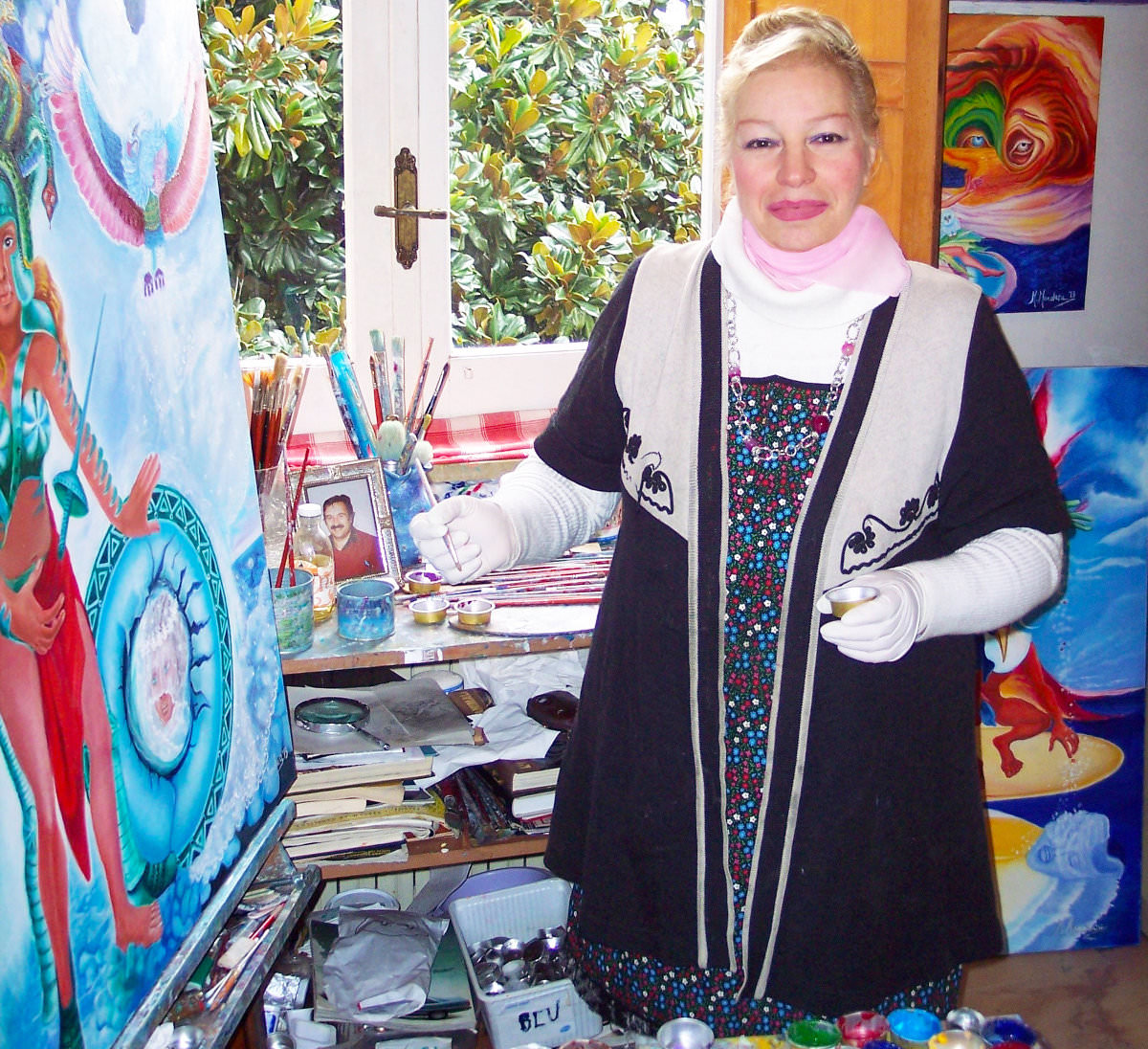BIOGRAPHYMarta Mànduca

Reviews ofcritics
«At every stage bear Ithaca in mind.
The arrival there is your appointed lot.
But hurry not the voyage in the least:
'twere better if you travelled many years […]
for you will arrive wise and experienced,
having long since perceived the unapparent sense in Ithacas.»
Konstantinos Kavafis, Itaca
We had awaited her with anxiety, even with trepidation, for Marta Mànduca, in these years - far too long - she had spent away from the scene, and her mind was crowded with painful thoughts that insistently swirled towards something else. Since 1992, the year she completed the allusive plot of one of her most fascinating paintings, “Orpheus”, nothing more had been heard of this talented artist who had come into her own in the aristocratic world of surrealism. Nothing, despite her successes and the critical and public acclaim she had enjoyed for two decades, culminating in a very distinguished exhibition at the «La Barcaccia» gallery in Rome, no less, the gallery which during his lifetime had held the exclusive rights to the works of the 20th century's most significant painter: Giorgio de Chirico.
With the passing of time, surrounded by the fundamental support of the dearest affections and urged by an urgency - that for painting - dormant, but never less, here is finally Marta Mànduca returning to offer herself in that artistic limelight that had not waited in vain for her: immediately, an important anthological exhibition at the headquarters of the Region; to follow, the well-deserved mention in the historic Catalog of Modern Art (Editoriale Giorgio Mondadori), an authentic "bible" of the sector; now, this refined volume and the current exhibition in the prestigious spaces of the Matalon Foundation in Milan, which sanction Marta Mànduca's definitive and authoritative relaunch.
Here we find a magnificent sequence of both her more recent works – painted between spring and last summer – and those which marked her brilliant début: from “Maternity” painted in 1976 to “Oedipus” (A homage to Sophocles) painted a year later; from “Faust” (A homage to W. Goethe) dated 1978 to “Concept of the Intelligence”, “Nuptial Veil” and “Outrage to the Art”, all from the same period and equally significant.
The sheer length of the time span contemplated helps reveal the most fecund and recurring sources of inspiration mined by this extremely erudite woman. She has drawn, and continues to draw, heavily on mythology and music (“The Power of the Destiny” - A homage to Verdi, 1982), science (“The Origin of the Man” - A homage to Darwin, 1981) and literature (“The Birth of a Poet”, 1982).
However, some aspects - indeed peculiarities - are immediately evident, which, adequately clarified, effectively remove the possibility of dangerous misunderstandings or other hypothetical misunderstandings: in the refined painting of Marta Mànduca, the subject is, rather, fascinating as much as necessary expressive pretext; the iconography maintains, as usual, the due distance from the original starting point; in short, there is no didactic or illustrative tinsel in works that express an ancestral or dreamlike vision of reality, wisely transfigured.
In his compositions, symbolic references germinate everywhere, hidden memories, arcane references, truths and omens kept in that remote corner of the mind where the light is pearly and the colors appear nebulous as enigmatic clues, in the dull ashes of ancient events now apollonian now dionysian .
Thus, in the intriguing wake where multitudes of archetypes swarm, Marta Mànduca's painting conquers a Hellenic aura inhabited by singular Mediterranean thrills; moreover, the ideal essence of a cultured surrealism in which, hermetic, her moods coincide.

